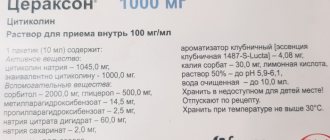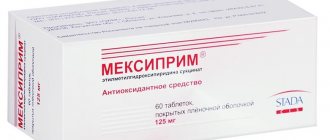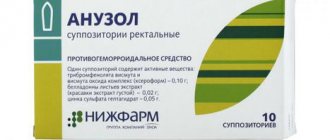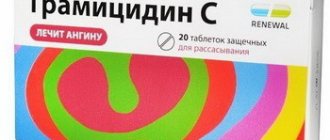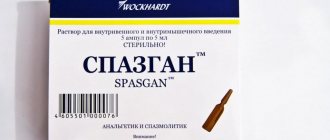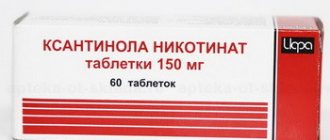Vilprafen solutab from the group of antibiotics: composition, medicinal properties
All antibiotics, based on their therapeutic effect on pathogenic microorganisms, are divided into bactericidal and bacteriostatic .
Drugs of the first group cause the death of bacteria , the second - prevent their reproduction . Currently, macrolide antibiotics are considered the safest (they can be taken by pregnant women). This group includes medications with a complex chemical structure that have a bacteriostatic effect on microorganisms.
An example is Vilprafen solutab, an antibacterial and antimicrobial agent that is used in the treatment of many infectious diseases and inflammations.
The effect of the drug is especially effective in the treatment of bacterial infections, when there is a need to replace penicillin medications.
Composition of Vilprafen solutab
The active component of the antibiotic, Josamycin , acts at the level of the intracellular structure of bacteria and affects their vital activity, disrupting the synthesis processes in microorganism cells.
1 tablet of Vilprafen Solutab contains Josamycin - 1000 mg, which is equivalent to Josamycin propionate in the amount of 1067.66 mg.
This dosage form of the drug is represented by tablets (soluble) that are white with a yellowish tint, taste sweet, and have a pleasant strawberry smell. On one side the inscription joza is applied to their surface, and on the other side - “1000”.
The auxiliary components of the antibiotic include:
- microcrystalline cellulose - 564.53 mg;
- hyprolose - 199.82 mg;
- sodium docusate - 10.02 mg;
- aspartame - 10.09 mg;
- colloidal silicon dioxide - 2.91 mg;
- flavor (strawberry) - 50.05 mg;
- magnesium stearate - 34.92 mg.
Indications for use: Vilprafen solutab
The use of a medicinal product from the group of antibiotics is advisable only against microorganisms that are sensitive to the action of the active substance of the drug. In the case of Vilprafen solutab, its active ingredient, josamycin, effectively fights the following types of bacteria:
- gram-positive : streptococci, corynbacteria, mycoplasma, staphylococci, legionella, peptococci, peptostreptococci, Propionibacterium acnes, Bacillus anthracis, clostridium spp;
- intracellular bacteria : mycoplasma, ureaplasma, treponema, chlamydia;
- meningococci, gonococci , hemophilus influenzae bacteria, as well as Helicobacter type.
The drug is not active against enterobacteria, therefore the effect on the microflora and mucous membrane of the stomach and intestinal tract is characterized as weak. At the same time, it should be noted that Vilprafen solutab is effective while the patient’s body is resistant to erythromycins and macrolide medications. In contrast, resistance to josamycin in patients is rare.
Indications for the use of antibiotics are:
- infections of the upper and lower respiratory tract and ENT organs (tonsillitis, sinusitis, pharyngitis, bronchitis of various etiologies, laryngitis, sinusitis, otitis, pneumonia, including atypical);
- diphtheria, whooping cough, scarlet fever;
- dental infections (gingivitis, pericoronitis, periodontitis, etc.);
- ophthalmological diseases (blepharitis, inflammation of the lacrimal sac);
- pathologies of skin and soft tissue: folliculitis, acne, furunculosis, abscess, phlegmon. Erysipelas, acne, anthrax, inflammation of the lymph nodes are also included in the list of antibiotic prescriptions;
- infections of the genitourinary system in the form of urethritis, cervicitis, epididymitis, prostatitis (if the disease is caused by chlamydia, mycoplasma);
- lymphogranulomas of venereal nature;
- ulcers, gastritis (if their cause is Helicobacter pylori).
The drug is characterized by rapid absorption and a good level of membrane penetration. Therefore, in order to achieve a stable concentration, the antibiotic must be taken with a break of 12 hours. After 48–96 hours of regularly taking the medicine, its amount in the blood will be stable.
The maximum level of the active component is recorded within 1 hour after application. Josamycin is excreted from the body to a greater extent in bile and less in urine.
Russian cheap substitutes
When buying substitutes, the patient first of all pays attention to those produced in Russia. These analogues are significantly cheaper and are not inferior in quality to Vilprafen.
Zitrolide
Zitrolide is an antibacterial drug for systemic use. Used to treat:
- ENT infections (bronchitis, rhinitis, pharyngitis);
- uncomplicated sexually transmitted infections;
- skin infections (chronic migratory erythema, impetigo, erysipelas);
- Helicobacter pillory (which causes gastritis and duodenitis).
Mechanism of action
It is worth limiting your intake of the drug:
- with excessive sensitivity to the active substance;
- patients weighing less than 50 kg;
- during periods of breastfeeding and pregnancy;
- in case of severe functional failures of the liver and kidneys.
It is necessary to take 1 time per day, an hour before meals, 2-4 capsules. In case of an overdose, vomiting, temporary hearing loss, and diarrhea occur. Treatment of overdose is symptomatic. May affect the ability to drive vehicles or other complex mechanisms. Do not use simultaneously with antacids and digoxin.
Azithromycin
This is a broad-spectrum antibiotic, classified as a macrolide. Effectively fights staphylococci (S. aureus, S. Epidermidis), streptococci (S. pneumoniae, S. groups C, F, G, S. Viridans, S. Pyogenes), but does not cope well with gram-negative bacteria, chlamydia and anaerobes. The half-life of the drug is 68 hours, the bioavailability is relatively low - 37%. The dosage depends on the disease (from 500 mg to 3 g).
May cause the following negative reactions:
- erythema multiforme;
- angioedema;
- stomach ache;
- flatulence;
- vomit;
- digestive disorders;
- scabies;
- eosinophilia;
- epidermal necrolysis;
- decrease in the number of leukocytes, neutrophils, platelets;
- arrhythmia, arthralgia, nephritis;
- decrease in potassium ions;
- hearing impairment,
- ventricular tachycardia;
- dizziness, feeling of anxiety;
- hyperkinesia;
- candidiasis, vaginitis;
- general weakness and drowsiness.
Instructions for use Vilprafen solutab 1000, price of the drug
The instructions for use (price of the drug for 10 pieces from 711 rubles) describe the treatment procedure and other useful information about Vilprafen solutab 1000 accurately and clearly. Therefore, before a patient - an adult or a child - begins to take an antibiotic, you must carefully read the instructions on the dosage regimen, precautions, drug interactions, as well as the side effects of the tablets.
How to take Vilprafen solutab
For adults and children (over 14 years old), the instructions prescribe the use of an antibiotic in a daily dose of 1–2 mg in two or three doses. Preferably in between meals.
For example, if, as prescribed by a doctor, you need to take 1 mg of the drug per day, then for this, one tablet of vilprafen solutab 1000 mg is dissolved in a glass of water and the medicine is drunk. The duration of treatment is from 5 days to 3 weeks.
In the case of treatment of infectious streptococcal disease, the duration of the course according to the instructions is 10 days.
The instructions also describe the duration of treatment with Vilprafen Solutab and how to take it for the following diseases:
- anti-Helicobacter therapy. Course - 7–14 days. Combination treatment, with dosed use of combined drugs;
- urogenital chlamydia. Course from twelve to fourteen days;
- rosacea. The course duration is ten or fifteen days;
- ureaplasma, chlamydia. Tablets of 1000 mg are taken 2 times a day (as part of complex therapy).
The duration of the course of antibiotic use in all cases is determined by the doctor.
Side effects of Vilprafen solutab
The instructions contain a list of side effects that may occur during treatment:
- Gastrointestinal disorders: nausea, loss of appetite, heartburn. Possible diarrhea, dysbacteriosis, candidiasis;
- Biliary tract and liver: increased levels of liver enzyme activity (in blood plasma). Rarely - impaired bile outflow, jaundice.
- Allergic reactions: urticaria, skin rash.
- Hearing impairment. A condition that is often dose related. After correcting the dosage regimen, the patient's hearing returns to normal.
The instructions also note that an overdose of an antibiotic can lead to side effects of the tablets in the form of various gastrointestinal disorders. In such cases, the patient is recommended to reduce the dosage of the drug.
Important : the drug is contraindicated for use in patients with hypersensitivity to the substances included in its composition.
Considering the side effects of Vilprafen Solutab, the antibiotic is prescribed with caution to pregnant women and mothers who are breastfeeding. And also for patients with renal failure. Such patients need to undergo special laboratory tests in order to make a decision on prescribing medication based on their results.
Prices for the drug and main analogues
Vilprafen is a fairly expensive drug; 10 tablets of 500 mg each cost buyers 500-600 rubles. Vilprafen Solutab is even more expensive, the price for the drug starts from 700 rubles and above. Prices for the most well-known analogues of the drug are presented in the table.
| A drug | Price (in rubles) |
| Zitrolide 0.5g, No. 3 | 310 |
| Azithromycin 0.25g, No. 6 | 35 |
| AzitRus forte 500 mg, No. 3 | 135 |
| Sumatrolide Solution Tablets 250 mg, No. 6 | 269 |
| Roxithromycin 0.15g, No. 10 | 166 |
| Clarithromycin-OZONE 500 mg, No. 5 | 106 |
| Sumamed tablets p.p.o. 125 mg, No. 6 | 237 |
| Ziomycin 250 mg, No. 6 | 210 |
| Macropen tab. 400 mg, No. 16 | 226 |
| Clubax OD tab. prolong p/o 500 mg, No. 7 | 252 |
| Sumamed forte powder for suspension, 200mg/5ml bottle | 320 |
| Azibiot 200mg/5ml | 259 |
Instructions for use Vilprafen solutab for children
Before starting treatment, the child’s parents receive doctor’s recommendations regarding the correct use of the antibiotic. In addition, they should familiarize themselves with the part of the instructions that describes the specifics of treating children with Vilprafen Solutab.
- Dosage form of the drug.
For different age categories, the manufacturer produces this medication in solid or liquid form:
- white, oblong tablets containing 500 mg josamycin;
- Vilprafen solutab tablets (active ingredient content – 1000 mg). They dissolve in water, taste sweet, aromatic;
- suspension. Every 10 ml of liquid preparation contains 300 mg of josamycin. As well as excipients: magnesium stearate, microcrystalline cellulose, aluminum hydroxide, titanium dioxide, colloidal anhydrous silica.
- Indications for use for children.
The drug can be prescribed to a child if he is diagnosed with infectious diseases:
- throat, ear, nose or damage to the upper respiratory system: tonsillitis, pharyngitis, sore throat, laryngitis, sinusitis, inflammation of the middle ear;
- lower respiratory tract: bronchitis (acute), bronchopneumonia, pneumonia, whooping cough;
- skin or soft tissues: phlegmon, furunculosis, lymphadenitis, phlegmon, pyoderma, erysipelas;
- genitourinary system in the form of: ureaplasma, urethritis, chlamydia, pyelonephritis, mycoplasmosis, epididymitis;
- oral cavity: gingivitis, stomatitis, periodontal disease.
And also Vilprafen, an antibiotic that effectively replaces penicillin in the treatment of diphtheria and scarlet fever, is prescribed if a child is hypersensitive to the penicillin group of drugs.
- Directions for use, doses.
According to the instructions, the dosage regimen of the medicine is determined based on the exact weight of the child:
- for body weight not more than 10 kg, a dose of 40–50 mg/kg should be divided into 2 or 3 doses;
- for body weight from 10 to 20 kg, 1/2 or 1/4 tablets are dissolved in water. The medicine is given to the child to drink 2 times a day. in a day;
- children weighing from 20 to 40 kg should take one or half a tablet (500 mg or 1000 mg), respectively, 2 r. per day;
- for a child whose weight is more than 40 kg, 1 tablet (whole) is prescribed, 2 rubles. per day.
For infants and small children, you can purchase a Vilprafen suspension. It is recommended to give it 3 rubles. per day. The dose of medication can be calculated based on the child’s body weight:
- starting from 3 to 12 months (body weight 5.5–10 kg), you need to give medicine, measuring from 2.5 to 5 ml;
- from one year to six years (body weight 10–21 kg), recommended doses of suspension for treatment are 5–10 ml;
- from six to fourteen years with a body weight of 21 kg - the dose is 10–15 ml.
The medicine is poured into a measuring cup and given to the child to drink between meals.
- Side effects.
Vilprafen solutab can cause adverse reactions in the form of nausea, diarrhea, discomfort in the gastrointestinal tract, liver, and also provoke the appearance of urticaria or swelling. Purpura and hearing loss are very rare.
Any of these manifestations should be reported to the doctor immediately in order to adjust the child’s treatment regimen.
Foreign analogues of Vilprafen
Foreign drugs are more effective and undergo more stringent quality checks. But a course of such medications will cost much more. Foreign-made medicines include Sumamed, Ziomycin, Macropen and Klabaks, which have different dosages - from 100 to 500 mg.
Sumamed
Sumamed is an antimicrobial drug for systemic use and belongs to the lincosamides. Available in the form of powder, tablets and capsules, respectively 100, 125 and 250 mg. Sumamed is active against gram-positive (streptococci, staphylococci, clostridia) and gram-negative (Neucheria, Brucella, Bordetella, Haemophilus influenzae) bacteria.
In addition, it can be effectively used against mycobacteria, legionella, chlamydia and ureaplasma. Sumamed is intended for oral administration several hours after meals. Dosages depend on the location of inflammation:
| Disease | Daily dose (mg) |
| Pneumonia, bronchitis | 500 |
| Erythema migrans | 1000 |
| Gastritis, gastroduodenitis | 1000 |
| Uncomplicated urethritis | 500-1000 |
Children: at the rate of 20 mg/kg on the first day, then from the second day - 10 mg/kg. Overdose may result in hearing loss and loose stools. In such a situation, it is necessary to immediately rinse the stomach and take absorbent drugs.
Ziomycin
Ziomycin is an Indian drug based on azithromycin. Used for inflammatory diseases of the pharynx, larynx, sinuses, sinuses, bronchi, lungs, skin infectious diseases, as well as genital infections. The bioavailability of the drug is 37%, binds poorly to plasma proteins (12%), and the half-life is several days. It is excreted in the form of various metabolites with bile and through the kidneys.
You should not use Ziomycin simultaneously with the following drugs: zidovudine, antacids, didanosine, indinavir, cyclosporine, terfenadine, trimethoprim, coumarins, atorvastatin.
Quite rare, but there have been cases of serious allergic reactions, including Quincke's edema. Other side effects include impairment of vision and hearing, impaired functioning of the liver and kidneys, dermatitis, myalgia, aggressiveness, candidiasis and groin infections, asthenia and anorexia.
Macropen
Macropen, or midecamycin, is a macrolide antimicrobial drug with a mechanism of action similar to Erythromycin. It has an antibacterial effect, and even the metabolites of the drug have an antibacterial effect, only less pronounced.
But over time, bacteria develop resistance to Macropen due to decreased penetration of the outer membrane. The drug effectively penetrates tissue, is metabolized in the liver, and is excreted primarily through bile. The daily dose for adults is 1600 mg.
Do not use Macropen during pregnancy and breastfeeding. Used only in children weighing 30 kilograms or more. There are no data on overdose. Possible adverse reactions:
- diarrhea;
- rashes;
- hyperemia;
- eosinophilia;
- abdominal pain;
- Quincke's edema;
- jaundice.
Clubax
Klabax is an Indian macrolide based on clarithromycin. Particularly effective against Mycoplasma pneumoniae and Legionella pneumophila. It is used for lobar pneumonia, sinusitis, ulcers, impetigo, erysipelas and other diseases.
Instructions for the drug
Klabaks quickly penetrates the bloodstream and is absorbed into tissues, bioavailability is 50%. The maximum concentration is reached after a few hours, the half-life is 7 hours. The daily dose (500 mg) is divided into two equal doses throughout the day. The course of treatment varies from a week to two weeks.
Klabaks can cause undesirable effects, such as stool disorders, allergic manifestations, hepatitis, and decreased platelet levels. In children, the drug is used starting from the age of two. During pregnancy and breastfeeding, the use of Klabax is prohibited.
special instructions
In the case of persistent severe diarrhea, one should keep in mind the possibility of developing life-threatening pseudomembranous colitis while taking josamycin.
In patients with renal failure, treatment should be carried out taking into account the results of appropriate laboratory tests (determination of endogenous creatinine clearance).
The possibility of cross-resistance to various macrolide antibiotics should be taken into account (microorganisms resistant to treatment with antibiotics related in chemical structure may also be resistant to josamycin).
